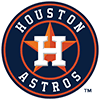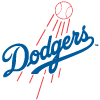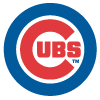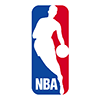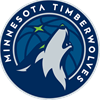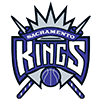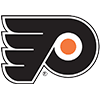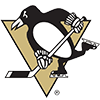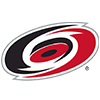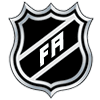We'll be back to our regularly scheduled MLB Barometer programming next week, but this week, the Barometer is going to focus on just two players. Chandler Simpson and Nick Kurtz may not be the top two prospects in baseball, but they've each earned tons of headlines both before and after their recent promotions, as they're both outliers in their own way.
Simpson is the most extreme slap-and-run prospect of his generation and looks like he'd be more at home in 1925 than 2025. Meanwhile Kurtz arrived after playing just 32 total games in the minors. In this article, I'll compare them to their closest peers from recent years to try to figure out whether we should fully go along with the hype train or keep expectations modest.
Chandler Simpson vs. Other Speed Demons
Simpson stole 104 bases in 110 minor-league games last year. While there's more to his profile than just his wheels, that number alone is enough to turn heads in the fantasy world. But a figure that extreme also makes it tough to find direct comparables.
Since 2010, only two players have reached triple-digit steals in the minors: Billy Hamilton, who had 103 in 2011 and an absurd 155 in 2012, and Delino DeShileds, who reached 101 in 2012. Hamilton carved out a long career, recording north of 55 steals for four consecutive seasons from 2014 to 2017 and playing a total of 951 MLB games over 11 seasons despite the fact that he slashed .239/.292/.325
We'll be back to our regularly scheduled MLB Barometer programming next week, but this week, the Barometer is going to focus on just two players. Chandler Simpson and Nick Kurtz may not be the top two prospects in baseball, but they've each earned tons of headlines both before and after their recent promotions, as they're both outliers in their own way.
Simpson is the most extreme slap-and-run prospect of his generation and looks like he'd be more at home in 1925 than 2025. Meanwhile Kurtz arrived after playing just 32 total games in the minors. In this article, I'll compare them to their closest peers from recent years to try to figure out whether we should fully go along with the hype train or keep expectations modest.
Chandler Simpson vs. Other Speed Demons
Simpson stole 104 bases in 110 minor-league games last year. While there's more to his profile than just his wheels, that number alone is enough to turn heads in the fantasy world. But a figure that extreme also makes it tough to find direct comparables.
Since 2010, only two players have reached triple-digit steals in the minors: Billy Hamilton, who had 103 in 2011 and an absurd 155 in 2012, and Delino DeShileds, who reached 101 in 2012. Hamilton carved out a long career, recording north of 55 steals for four consecutive seasons from 2014 to 2017 and playing a total of 951 MLB games over 11 seasons despite the fact that he slashed .239/.292/.325 and never managed more than six homers. DeShields hit a slightly better (but still poor) .246/.327/.342 and played 601 total major-league games across seven seasons but topped out at 29 steals.
Lowering the threshold from 100 steals to 70 gets us a larger pool of players to compare Simpson too, and if you were hoping for reasons to be encouraged, you might want to look away. Here is the full list of players who have stolen at least 70 bases in a minor-league season since 2010 alongside their total career MLB games played, as well as their peak steals total at the MLB level:
Year | Players | Peak MiLB SB | Career MLB G | Peak MLB SB |
|---|---|---|---|---|
2024 | Chandler Simpson | 104 | ? | ? |
2024 | Enrique Bradfield Jr. | 74 | 0 | 0 |
2023 | Victor Scott II | 94 | 76 | 8 |
2023 | Jonatan Clase | 79 | 26 | 3 |
2023 | Seth Stephenson | 70 | 0 | 0 |
2022 | Esteury Ruiz | 85 | 178 | 67 |
2022 | Luis Valdez | 71 | 0 | 0 |
2022 | Nasim Nunez | 70 | 59 | 8 |
2022 | David Hamilton | 70 | 125 | 33 |
2022 | Omar De Los Santos | 70 | 0 | 0 |
2021 | Jayce Easley | 70 | 0 | 0 |
2018 | Myles Straw | 70 | 580 | 30 |
2017 | Wes Rogers | 70 | 0 | 0 |
2015 | Jorge Mateo | 82 | 457 | 35 |
2015 | Yefri Perez | 71 | 12 | 4 |
2014 | Mallex Smith | 88 | 442 | 46 |
2014 | Gabriel Mejia | 72 | 0 | 0 |
2013 | Micah Johnson | 84 | 61 | 3 |
2013 | Billy Burns | 74 | 242 | 26 |
2013 | Travis Jankowski | 71 | 688 | 30 |
2012 | Billy Hamilton | 155 | 951 | 59 |
2012 | Delino DeShields | 101 | 601 | 29 |
2012 | Rico Noel | 90 | 15 | 5 |
2012 | Theo Bowe | 70 | 0 | 0 |
2011 | Anthony Gose | 70 | 403 | 23 |
2010 | Delvi Cid | 71 | 0 | 0 |
That's 25 players other than Simpson who have managed the feat in the last 15 years. Of those, nine failed to reach the majors at all, while seven have played less than a full season's worth of MLB games. The players who have carved out extended careers don't exactly make a list of superstars, either: The aforementioned Hamilton and DeShields are joined by Gose, Jankowski, Burns, Smith, Mateo, Straw and Ruiz. At best, players in this group tend to spend a season or two as glove-first regulars, but they spend most of their careers as bench players or worse.
So are we all getting worked up over a player who should count himself lucky if he's the second coming of Myles Straw? Maybe, but there's reason to think he'll have a better career than his fellow speedsters. Here's where Simpson ranked in his minor-league career compared to the rest of the group listed above:
| wRC+ | ISO | K% | |
|---|---|---|---|
| Simpson (rank) | 123 (8th) | .047 (last) | 8.8% (1st) |
| Other 25, Average | 112 | .138 | 19.7% |
| Other 25, Median | 115 | .098 | 20.0% |
Note: For the other players' career minor-league stats, I used only their minor-league numbers up to their final 70-steal season in order to compare Simpson to them at a similar point in their careers.
So Simpson wasn't the best bat among his group of minor-league speedsters (that honor, discouragingly, goes to Gabriel Mejia, who stole 72 bases in 70 games in rookie ball in 2014 but never advanced beyond Double-A), but he was above-average and he got there in an unusual way. He had less power than every other member of his cohort, though several such as Nasim Nunez (.049 ISO) came close.
Simpson is a true outlier when it comes to his contact ability, however. He struck out less than half as often as the average member of his group of speedsters, with Billy Burns (12.5 percent) coming in a distant second. That calls for another look at Simpson's closest comparables, this time searching for players who are similarly extreme in their contact-over-power approach.
Including Simpson, 22 players have hit the following two benchmarks in the last 15 years in at least 1,000 minor-league plate appearances:
- A strikeout rate between 6.8 percent and 10.8 percent
- An ISO between .027 and .067
Of that group, Simpson is just the third to even reach the major leagues, following Jesus Feliciano and Omar Narvaez. Evidence seems to indicate that it's nearly impossible to carve out a big-league career with this extreme of a lack of power.
If we expand the ISO filter all the way out to .094, fully doubling Simpson's career mark, we get 26 more names, of which a full half made it to the majors. Among them are several players who have spent multiple seasons as everyday players, including DJ LeMahieu (.094 ISO), David Fletcher (.081 ISO) and Luis Arraez (.081 ISO), though even those players exhibited notably more power than Simpson.
So where does that leave us in a search for Simpson's predecessors? Have we learned anything about whether players like him tend to succeed in the majors? That depends on if you think we've managed to find any "players like him" in the first place.
If we look at Simpson's speed alone, history tells us it would be a win for him to match Myles Straw, a career .245/.317/.311 hitter (77 wRC+). If we look at his extreme contact-over-power approach, evidence suggests he's lucky to even be here, and that matching Omar Narvaez and his .252/.335/.373 career line (96 wRC+) would be quite a victory.
But if you're looking for someone who has both Simpson's speed and his extreme contact ability, well, you won't find one. And that's exactly why the young outfielder has received so much attention. Nobody is phrasing it in terms of, "What if Myles Straw had Omar Narvaez's bat?" But what if he did? Or, if you want to dream, "What if Billy Hamilton hit like Luis Arraez?"
Nick Kurtz vs. Other Fast-Moving College Bats
While the search for players comparable to Simpson largely ended in failure, we're bound to have a bit more success with Kurtz. Kurtz isn't an outlier in terms of his skillset. He's a slugging first baseman, an archetype we've seen plenty of examples of throughout baseball history.
But Kurtz is part of a growing group of players who have entered the league in recent years: College first basemen with bats that are practically big-league ready from the moment they were drafted, leading to very rapid rises through the minors. Here is a list of players drafted in the first round in the last decade who fit into a similar category as fast-moving college first basemen:
| Player | Draft Year | Pick | MiLB G | NCAA OPS | MiLB OPS | MLB OPS |
|---|---|---|---|---|---|---|
| Nick Kurtz | 2024 | 4 | 32 | 1.235 | 1.120 | ? |
| Nolan Schanuel | 2023 | 11 | 22 | 1.215 | .992 | .712 |
| Spencer Torkelson | 2020 | 1 | 121* | 1.192 | .935* | .709 |
| Andrew Vaughn | 2019 | 3 | 57 | 1.183 | .858 | .715 |
*only games from before his MLB debut are included
It's not exactly the most compelling set of comps. Vaughn, Torkelson and Schanuel dominated college pitching to almost the same extent as Kurtz, and they had quite a bit of success in their brief tours of the minors as well. You could point to the fact that Kurtz's minor-league OPS beats the rest of the group by at least 128 points, but is there really all that much of a difference between an OPS of 1.120 and an OPS of .992 over such a small sample? I doubt it.
Let's take a deeper look into this quartet's power and contact as they rose through the levels to see whether we should expect something different to happen to Kurtz:
| Player | NCAA ISO | NCAA K% | MiLB ISO | MiLB K% | MLB ISO | MLB K% |
|---|---|---|---|---|---|---|
| Nick Kurtz | .392 | 16.6% | .353 | 24.4% | ? | ? |
| Nolan Schanuel | .312 | 7.0% | .122 | 10.3% | .106 | 16.5% |
| Spencer Torkelson | .392 | 16.6% | .285 | 21.5% | .180 | 25.6% |
| Andrew Vaughn | .314 | 10.1% | .194 | 15.4% | .160 | 20.4% |
That table reveals reasons for both optimism and pessimism regarding Kurtz's future. On the positive side, he was tied for Torkelson for the best ISO in college and easily had the best ISO in the group during their brief stints in the minors. For Vaughn, and particularly for Schanuel, their minor-league numbers already cast doubt on their power production, but there's no reason to worry there with Kurtz.
On the negative side, though, Kurtz was tied with Torkelson for the highest strikeout rate in college and then saw his strikeouts rise more than anyone else in the group in the minors. The other three players all saw their strikeout rates rise an additional 4.1 to 6.2 points once they reached the majors. For Kurtz, that would put his estimated strikeout rate somewhere between 28.5 and 30.6 percent. That lines up with most of his projections, as Steamer, THE BAT and OOPSY all project him at the bottom of that range, though ZiPS and ATC are more optimistic.
Plenty of hitters found success with a strikeout rate in that range last season, including Oneil Cruz, Teoscar Hernandez, Brent Rooker and Kyle Schwarber. Kurtz will need elite power to make it work with that level of swing-and-miss, but it seems like he has that. Still, if you saw the extent of his success at the plate in college and his rapid rise through the minors and thought he was a shoo-in for quick success at the big-league level as a result, Schanuel, Torkelson and Vaughn offer reminders not to get ahead of ourselves.







